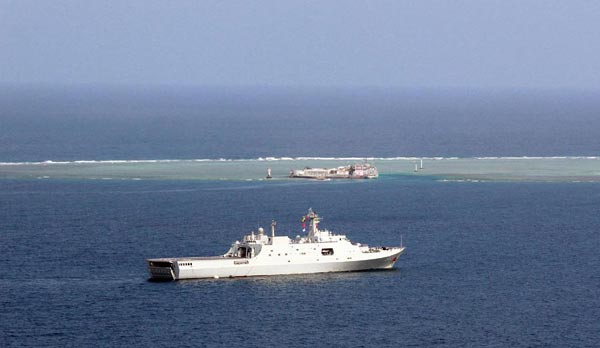High military budget necessary
(China Daily) Updated: 2016-03-03 07:42
 |
|
A formation of the Nanhai Fleet of China's Navy on Saturday finished a three-day patrol of the Nansha islands in the South China Sea. [Photo/Xinhua] |
As the annual session of the National People's Congress, China's top legislature, draws near, there has been a growing number of foreign media reports speculating that "a considerable rise" in China's military spending will be announced. Some have suggested a 20 percent rise.
In the context of the United States' accelerated military deployment in the Asia-Pacific region, its strengthening of its military alliances with countries in the region and increased military provocations in the South China Sea, it is only reasonable to make comparison between China's military spending and that of the US if there is a need to compare China's military spending with that of others.
Compared with the 10 large aircraft carrier battle groups the US possesses, China only has an intermediate-sized aircraft carrier that is not part of its fighting capabilities. That means China still has a lot to do to upgrade its military combat system. There is a belief that only after its military budget is at least a half or two-thirds that of the US can China realize an initial strategic balance with the US in the Asia-Pacific.
China's military buildup is not intended for confrontation with the US. It is only an indispensable step toward matching its military strength to its economic status, and dealing with the greater geopolitical pressures China faces than other major powers.
A large military gap between China and the US is unfavorable to world peace, and may spark risky military moves from the US, the stronger party. Washington's recent show of its military muscle in the South China Sea can largely be attributed to its superior military strength. The stronger China is militarily, the less the US will be motivated to make such military provocations.
China's exact military budget for this year is yet to be revealed, but a majority of Chinese people look forward to a considerable increase.











